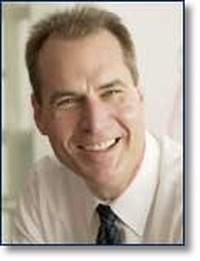Hands On Volunteers
18 years, 5 months ago
(Comments)
Mark Hass notes that personal philanthropic involvement is of great importance to the young, post-Katrina generation of Americans.
If you manage a public relations agency or corporate communications function, you know the importance of listening well to the two key constituencies that dictate your operational priorities: employees and clients. A year ago, I began getting the same message, stereo, from these two groups regarding the need to become a more critical and valued member of our communities.
Most of Manning Selvage & Lee’s employees take part in some sort of community philanthropic activity. They give time at their places of worship; they coach a youth sports team; they donate money to local and national charities. The agency also participates in charitable events sponsored by key clients. We believed we already WERE a critical part of our communities. But what I was hearing was about something else, and the message was clearly that we needed to do more.
First, an increasing number of new agency hires, the talented young men and women who were joining us from college or from an entry-level job they’d taken just after college, were asking us some unexpected questions during job interviews. After the anticipated queries about salary, benefits and work assignments, they wanted to know about the work-related opportunities we would give them to do "good" in their communities.
The Post-Katrina Generation
This post-Katrina generation places great importance on the importance of personal philanthropic involvement. The need to do it is a key part of their life plans, and they define philanthropy in a very specific way. They are about giving time, not giving money.
This may be so because they have much more of the former, but more likely is the result of having watched our government’s ineffective response to Katrina’s devastation and the way private industry and citizens stepped in. These new idealists have the need to personally make a tangible, visible difference in the lives of those less fortunate.
At the same time, the CEO of a key agency client asked me to consider joining the corporate council of an Atlanta-based national volunteer organization, the Hands On Network. Like many public relations agencies, Manning Selvage & Lee often advises clients about the importance of having a strategic corporate social responsibility program, while approaching the same subject half-heartedly as an agency priority. The old shoemaker’s dilemma.
A similar phenomenon affects our colleagues working in corporate communications: They advise their CEOs about the importance of CSR and publish CSR reports, but lead few organized efforts for their own team members to get personally involved.
Hands On Network
What distinguished the Hands On Network (www.handsonnetwork.org) and made it so appealing, especially in light of the feedback I was receiving from younger employees, was its emphasis on the active involvement of corporate employees in real-world projects designed to benefit local communities. Sure, cash donations are appreciated, but their emphasis was on putting together willing volunteers organized in corporate teams with local schools and neighborhood groups that needed help. We liked what we saw, and we joined.
So, on a sunny September morning during the nation’s annual Corporate Month of Service, I led a group of Manning Selvage & Lee employees from our New York office on a day of carpentry, painting and landscaping to help rehabilitate an aging school building in an underserved area of the city.
At other times that month, groups from agency offices across North America – Los Angeles, Chicago, Atlanta, Washington, Detroit, Toronto, Boston – took on similar projects in their communities, working alongside teams from client companies and others. All wore white T-shirts with the agency’s distinctive logo; all worked together as task-oriented teams without regard for the traditional hierarchy of the agency. (I took instruction on shelf installation from the finance director of New York, and happily lugged bags of dirt for account executives and assistants.)
The program was a huge success, with agency employees logging more than 1,000 hours of service in September alone as part of this organized, agency-wide activity. Our agency culture includes a core value to work together with one another in the right way. It’s collaboration with a focus on the success of our clients and the agency. So, the process of putting our "hands on" inside our own communities, working side-by-side with our colleagues, was spot on in terms of reinforcing that culture and will certainly have an impact on retention and future recruitment.
Key Learnings
Key learnings for communications organization and PR agencies from our efforts to organize and institutionalize philanthropic activities:
• It’s not enough to provide arm’s-length charitable support. There is an expectation, especially among young employees, that we will organize and provide community service opportunities in a direct and "hands on" way.
• The communications function, whether agency based or inside a corporation, should be the functional center of these hands-on activities. As PR professionals, we need to walk the talk.
• For agencies, partner with clients on community projects; inside a corporation, have Communications lead activities that integrate other key externally facing groups

The Author
Mark Hass
Mark Hass, global CEO, Manning, Selvage & Lee.
mail the authorvisit the author's website
Forward, Post, Comment | #IpraITL
We are keen for our IPRA Thought Leadership essays to stimulate debate. With that objective in mind, we encourage readers to participate in and facilitate discussion. Please forward essay links to your industry contacts, post them to blogs, websites and social networking sites and above all give us your feedback via forums such as IPRA’s LinkedIn group. A new ITL essay is published on the IPRA website every week. Prospective ITL essay contributors should send a short synopsis to IPRA head of editorial content Rob Gray emailShare on Twitter Share on Facebook


Comments